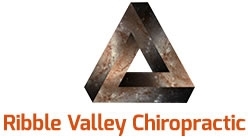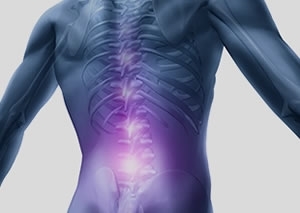The Physical Challenges of Active Outdoor Pursuits - Preparation

By Clive S Sherwood DC MSc at Ribble Valley Chiropractic
Gamekeeper? Angler? Archer? Deerstalker? Small game or clay pigeon shooter?
Congratulations! You have found some of the best activities to follow - contact with nature, exercise and environmental concern all wrapped into one.
As with all activities, of course, there can be risks. I will presume that you understand and follow the basic safety principles of your chosen activity (be it gunmanship, dealing with sharp objects, whatever…) and generally not putting yourself in deliberate danger, and look here at some of the more specific physical and environmental challenges you might face.
Braving the elements, hazardous terrain, unfamiliar routes through an area, and the chosen activity itself can all offer some hazards. Overall, your best defense against these are preparation and self-responsibility.
Preparation is obvious to a degree - making sure you have warm and waterproof clothing, planning the routes in and out and having the means to navigate and negotiate them, having a means to contact help in an emergency, having the skills and experience to undertake the activity, and knowing a “Plan B” in case something untoward happens.
Basic survival and first aid training can give you an edge if problems arise, but undertaking appropriate physical and skills training before the event is better as it can avoid problems in the first place. You should be physically capable of negotiating boggy ground, slippery rocks and scree, or tangled roots and deadfall, while ducking under low branches or leaping small ditches in a single bound.
You should have physical reserves built up before the event to avoid exhaustion. This is demanding of both the cardiovascular system and of the muscles and tendons, but also it needs a properly working nervous system too.
 Proprioception is the body’s internal sense of position and movement. Proprioception is mostly dealt with at a subconscious, reflex level. With a well developed proprioceptive facility, muscular movements can be adjusted to a finer degree of accuracy to maintain equilibrium and to avoid unnecessary tension that might lead to earlier fatigue (1).
Proprioception is the body’s internal sense of position and movement. Proprioception is mostly dealt with at a subconscious, reflex level. With a well developed proprioceptive facility, muscular movements can be adjusted to a finer degree of accuracy to maintain equilibrium and to avoid unnecessary tension that might lead to earlier fatigue (1).
Proprioceptive deficits have been demonstrated related to injury or surgery (2, 3, 4, 5), and the effects of a “local” injury can be very wide-ranging (3).
In these studies, however, little thought is given to the possibility of proprioceptive deficit as a precursor of an injury - this is a credible mechanism of injury (6), and injury is what we are trying to avoid.
So, along with doing exercises to build up cardiovascular reserves and muscle strength, consider additional exercises or treatments to improve proprioception and help the nervous system. This training is more effective if you pay attention to what you feel is going on throughout the movement, so keep it novel, keep it short, and play with it rather than “zone out” like during a long, boring run!
The following are some ideas, and are not necessarily intended as specific recommendations for any individual:
- Lower limbs: standing heel to toe, like a tightrope walker; standing on one leg; standing on wobble boards and seesaws; walking over criss-crossed mats, rugs or carpets, or a mattress - things can be made more difficult by getting your arms, trunk or free leg to perform specific tasks (like throwing and catching a ball), or by closing your eyes
- Trunk: sitting on an exercise ball or a pile of soft cushions; lying face up or face down over an exercise ball or pile of soft cushions while keeping your trunk relatively straight and stable - again this can be made more difficult by performing tasks like pushing your pelvis to one side while keeping your head & shoulders upright, by closing your eyes, or by having you keep upright against someone gently nudging you off balance
- Upper limbs: pointing at or touching targets with eyes open and then closed, trying to get the same spot with eyes closed; leaning against a football against a wall, and holding steady while you roll the ball around a bit to unbalance yourself; or any number of variations on push-ups, dips and chin-ups.
Of course, if you need help then Chiropractic and/or Physiotherapy care can be tailored to your specific needs and capabilities. At Ribble Valley Chiropractic, I have a number of approaches that could be useful from both professions - if you are not near the Ribble Valley you might have to do a bit of research...
If you think you might have problems relating to proprioception, such as degenerative joints, weakness or balance problems, or pains that just don't seem to get better despite treatment, you are not alone. While you are online and have shown motivation to help yourself by reading this far, check out our website so you can see that it's right for you.
References
1. McCloskey, D.I., Prochazka, A. The role of sensory information in the guidance of voluntary movement. Somatosensory and Motor Research:11; 69-76,1994
2. Barrett, D.S, Cobb, A G, Bentley, G. Joint proprioception in normal, osteoarthritic and replaced knees. Journal of Bone and Joint Surgery, 1991;73:53-56
3. Bullock-Saxton JE Local sensation changes and altered hip muscle function following severe ankle sprain. Phys Ther 1994 Jan;74(1):17-28
4. Herzog W; Suter E, Muscle inhibition following knee injury and disease. Sportverletz Sportschaden 1997 Sep;11(3):74-8
5. Slemenda C et al Quadriceps weakness and osteoarthritis of the knee, Ann Intern Med 1997 Jul 15;127(2):97-104
6. Orchard J; Marsden J; Lord S; Garlick D Preseason hamstring muscle weakness associated with hamstring muscle injury in Australian footballers. Am J Sports Med, 25(1):81-5 1997 Jan-Feb
7. http://www.bushcraftuk.com/forum/content.php?r=243-Survival-is-all-about-a-good-cup-of-tea
8. Sharma, H; Meredith, AD Blackthorn injury: a report of three interesting cases, Emerg Med J 2004;21:392
9. http://www.nhs.uk/conditions/Lyme-disease/Pages/Introduction.aspx
Promote your business with the GWCT
A GWCT Trade Membership entitles you to a FREE guest blog spot which will be promoted directly to over 16,000 GWCT members and non-members alike.
GWCT Trade Membership benefits >